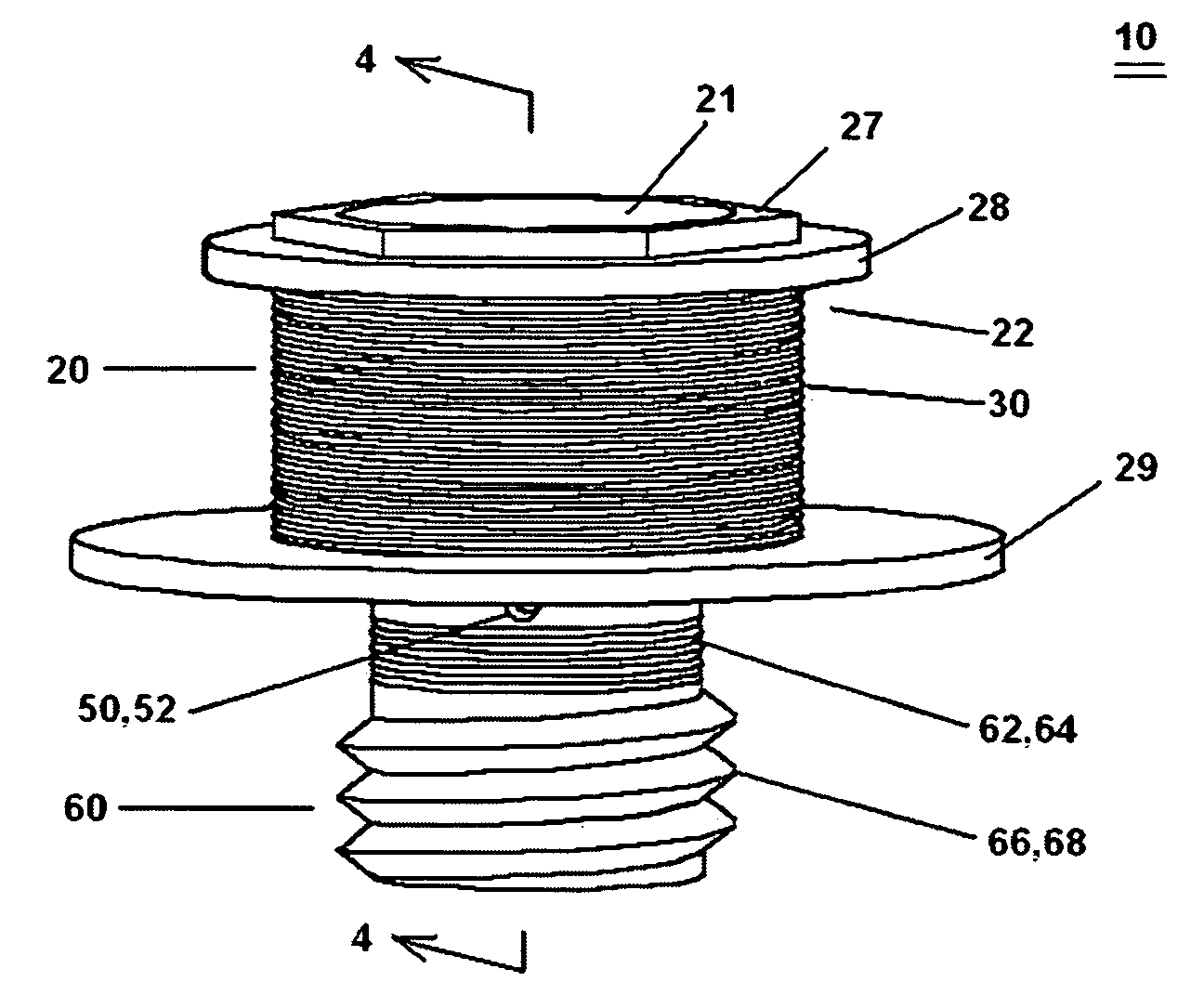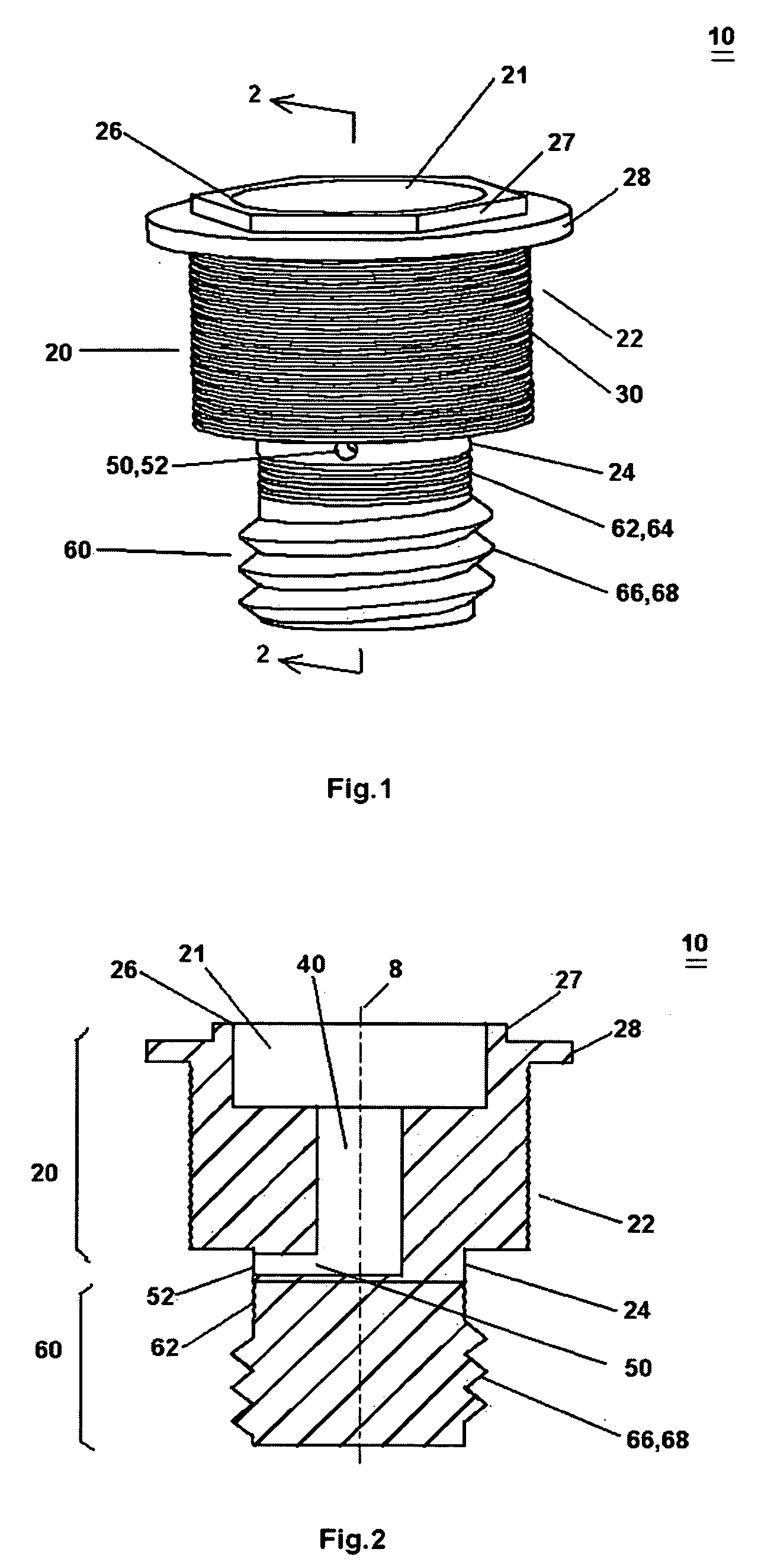Transcutaneous port having micro-textured surfaces for tissue and bone integration
a tissue and bone integration and transcutaneous port technology, applied in the field of transcutaneous port, can solve the problems of limited stability of the amputation si
- Summary
- Abstract
- Description
- Claims
- Application Information
AI Technical Summary
Benefits of technology
Problems solved by technology
Method used
Image
Examples
Embodiment Construction
[0022] In one aspect, the present invention provides a transcutaneous port which can be surgically implanted into a site in a patient's body and serve as a basis of electrical communication between a prosthetic motor device and an amputation or trauma site.
[0023] Referring to FIGS. 1 and 2, in one embodiment transcutaneous port 10 comprises subcutaneous port section 20 and bone fixation section 60. Both sections are essentially cylindrical. Subcutaneous port section 20 has an upper portion 22 and a lower portion 24. Upper portion 22 is larger in diameter than lower portion 24. As shown, subcutaneous port section 20 has an axial channel 40 extending from an upper end 26 of upper portion 22 into lower portion 24. Lower portion 24 has therein a transverse channel 50 disposed transversely to, and connecting with, axial channel 40. Transverse channel 50 has an exit 52 at one side of lower portion 24. Upper portion 22 also has a top flange 28 disposed around upper end 26. Optionally, upp...
PUM
 Login to View More
Login to View More Abstract
Description
Claims
Application Information
 Login to View More
Login to View More - R&D
- Intellectual Property
- Life Sciences
- Materials
- Tech Scout
- Unparalleled Data Quality
- Higher Quality Content
- 60% Fewer Hallucinations
Browse by: Latest US Patents, China's latest patents, Technical Efficacy Thesaurus, Application Domain, Technology Topic, Popular Technical Reports.
© 2025 PatSnap. All rights reserved.Legal|Privacy policy|Modern Slavery Act Transparency Statement|Sitemap|About US| Contact US: help@patsnap.com



